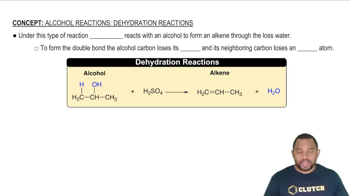Here are the essential concepts you must grasp in order to answer the question correctly.
Equilibrium Constant (Kc)
The equilibrium constant (Kc) is a numerical value that expresses the ratio of the concentrations of products to reactants at equilibrium for a given reaction at a specific temperature. It is calculated using the formula Kc = [products]^[coefficients] / [reactants]^[coefficients]. Understanding Kc is essential for predicting the direction of a reaction and the extent to which reactants are converted into products.
Recommended video:
Equilibrium Constant Expressions
Hydrolysis Reaction
Hydrolysis is a chemical reaction in which a compound reacts with water, leading to the breakdown of that compound. In the case of ethyl acetate, hydrolysis involves the reaction of ethyl acetate with water to form acetic acid and ethanol. This reaction is important in organic chemistry and is often reversible, meaning it can reach a state of equilibrium.
Recommended video:
Alcohol Reactions: Dehydration Reactions
Le Chatelier's Principle
Le Chatelier's Principle states that if a dynamic equilibrium is disturbed by changing the conditions, the system will adjust itself to counteract the change and restore a new equilibrium. This principle is crucial for understanding how changes in concentration, temperature, or pressure affect the position of equilibrium in reactions such as the hydrolysis of ethyl acetate.
Recommended video:
 Verified step by step guidance
Verified step by step guidance

